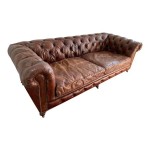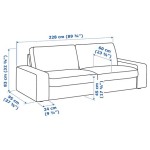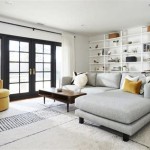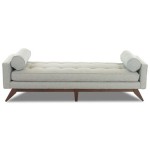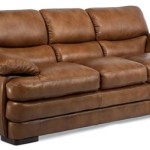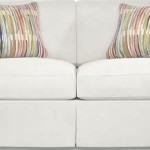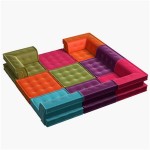What is a Chesterfield Sofa?
The Chesterfield sofa is a distinctive furniture design characterized by its deep button tufting, rolled arms that are the same height as the back, and often, a low seat. While the exact origins remain somewhat debated, its enduring popularity speaks to a timeless aesthetic that blends comfort, elegance, and a touch of traditional British style. This type of sofa has become a staple in libraries, studies, and even modern living rooms, symbolizing sophistication and quality craftsmanship.
Understanding what constitutes a Chesterfield sofa goes beyond simply recognizing its visually appealing features. The construction methods, materials used, and subtle variations in design all contribute to the overall identity of this iconic piece of furniture. This article delves into the defining characteristics, historical context, and potential interpretations of the Chesterfield sofa, providing a comprehensive overview of its components and evolution.
Defining Characteristics of a Chesterfield Sofa
The most immediately recognizable aspect of a Chesterfield is its deep button tufting. This is a technique where the upholstery fabric (typically leather, but other materials are also used) is pulled and secured at regular intervals, creating a diamond-shaped pattern. The buttons themselves are not merely decorative; they play a crucial role in maintaining the shape and tension of the upholstery, preventing sagging and ensuring longevity. The tufting process requires considerable skill and precision, contributing to the higher price point often associated with genuine Chesterfield sofas.
Rolled arms that are the same height as the back are another hallmark. This design element, sometimes called "equal height" or "scroll arms," creates a sense of symmetry and visual balance. The arms curve outwards, providing a comfortable place to rest one’s arm, while adhering to a consistent height line that flows seamlessly across the entire sofa. This unified structure distinguishes it from many other sofa designs with varying arm and back heights.
A low seat is a common, though not universally present, feature of Chesterfield sofas. This lower profile contributes to the sofa's overall sense of grandeur and formality. While some modern interpretations may incorporate slightly higher seats for increased comfort and accessibility, the traditional Chesterfield tends to sit lower to the ground, emphasizing its classic proportions.
The frame of a Chesterfield sofa is typically constructed from hardwood, such as beech or birch, to ensure durability and stability. The frame serves as the foundation for the entire piece, providing support for the springs, padding, and upholstery. A well-constructed frame is essential for resisting wear and tear and maintaining the structural integrity of the sofa over time.
The suspension system beneath the cushions is another critical aspect of the sofa's construction. Traditionally, coil springs were used to provide support and resilience. These springs are carefully arranged and tied together to distribute weight evenly and prevent sagging. Modern Chesterfield sofas may utilize other types of suspension systems, such as webbing or sinuous springs, but the goal remains the same: to create a comfortable and supportive seating experience.
Finally, the upholstery is a key defining factor. Leather is the most commonly associated material with Chesterfield sofas, particularly full-grain leather known for its durability and natural beauty. Leather ages gracefully, developing a unique patina over time that adds to the sofa's character. However, Chesterfield sofas can also be upholstered in a variety of fabrics, including velvet, linen, and wool, offering a wider range of aesthetic options. The choice of upholstery material significantly impacts the overall look and feel of the sofa.
Historical Context and Evolution
The origin of the Chesterfield sofa is often attributed to Lord Philip Stanhope, the 4th Earl of Chesterfield, in the mid-18th century. Legend has it that he commissioned a furniture maker to create a sofa that would allow a gentleman to sit upright without wrinkling his clothes. While the historical accuracy of this anecdote is difficult to verify, it highlights the sofa's association with elegance and practicality.
The Chesterfield sofa quickly gained popularity among the British aristocracy and upper classes. Its distinctive style became a symbol of status and refinement, gracing the halls of stately homes and gentlemen's clubs. The design remained relatively unchanged for many years, adhering to the principles of deep button tufting, rolled arms, and a sturdy frame.
Over time, the Chesterfield sofa evolved in subtle ways to meet changing tastes and technological advancements. While the core design elements remained intact, variations in size, shape, and upholstery became more common. Modern Chesterfield sofas may incorporate more contemporary features, such as higher seats, slimmer profiles, and a wider range of fabric options. Despite these adaptations, the essence of the Chesterfield – its deep button tufting and rolled arms – continues to define its identity.
The Industrial Revolution had a significant impact on the production of Chesterfield sofas. Mass production techniques allowed for greater efficiency and affordability, making the sofa accessible to a wider audience. However, the quality of materials and craftsmanship sometimes suffered as a result of these changes. Consequently, vintage Chesterfield sofas made before the era of mass production are often highly valued for their superior construction and attention to detail.
The Chesterfield sofa's popularity spread beyond British borders, becoming a global symbol of classic design. It has been featured in countless films, television shows, and magazines, solidifying its place in popular culture. Today, Chesterfield sofas can be found in homes, offices, and commercial spaces around the world, representing a timeless aesthetic that transcends geographical boundaries.
Furthermore, there are regional interpretations and adaptations of the Chesterfield design. For example, differences may exist in the specific type of leather used, the depth of the tufting, or the shape of the rolled arms. These regional variations reflect the influence of local materials, craftsmanship traditions, and aesthetic preferences.
Variations and Interpretations
While the classic Chesterfield sofa adheres to a specific set of design principles, there is room for variation and interpretation within those parameters. These variations can involve changes in size, shape, upholstery, and detailing, resulting in a diverse range of styles that still retain the core identity of the Chesterfield.
The size of a Chesterfield sofa can vary considerably, from compact loveseats to expansive sectionals. This allows for flexibility in adapting the sofa to different room sizes and spatial arrangements. The number of seat cushions can also vary, affecting the overall aesthetic and comfort level. Smaller spaces might benefit from a two-seat Chesterfield, while larger rooms can accommodate a three-seat or even a sectional configuration.
The shape of the arms and back can also be subject to subtle variations. While the classic Chesterfield features rolled arms that are the same height as the back, some interpretations may incorporate slightly curved or angled arms. The back may be slightly higher or lower, depending on the desired aesthetic. These subtle changes can significantly alter the overall look and feel of the sofa.
Upholstery is a major factor in differentiating Chesterfield sofas. While leather is the traditional choice, a wide range of fabrics are now available, including velvet, linen, wool, and even patterned textiles. The choice of upholstery material can dramatically impact the sofa's style, from classic and formal to modern and eclectic. Color also plays a crucial role, with options ranging from traditional browns and blacks to bold and vibrant hues.
The type of button used in the tufting can also vary, adding another layer of detail to the design. Some Chesterfield sofas feature leather-covered buttons, while others use metal or decorative buttons. The size and spacing of the buttons can also be adjusted to create different visual effects. Finer details, such as nailhead trim or piping, can further enhance the sofa's aesthetic appeal.
Modern interpretations of the Chesterfield sofa may incorporate features that were not traditionally present, such as USB charging ports, adjustable headrests, or built-in storage. These modern amenities enhance the sofa's functionality without compromising its overall style. Similarly, some designers have experimented with unconventional materials, such as recycled fabrics or sustainably sourced wood, to create eco-friendly Chesterfield sofas.
Ultimately, the interpretation of a Chesterfield sofa depends on the designer's vision and the client's preferences. While the core design elements remain constant, the possibilities for customization and adaptation are virtually endless. This allows for the creation of unique and personalized Chesterfield sofas that reflect individual tastes and lifestyles.

London Chesterfield Sofa Distinctive Chesterfields Usa

Manhattan Chesterfield Sofa Distinctive Chesterfields Usa

History Of The Chesterfield Sofa Timeless Chesterfields Blog

Woodstock Chesterfield Sofa Sofas Oswald Pablo

The Bolton Collection Chesterfield Sofa Company
Guide To A Chesterfield Sofa Dfs

What Is A Chesterfield Sofa Style

What Is A Chesterfield Sofa Style

Leather Chesterfield Sofas Suites Sofa Co

Richmount Deep Oned Sofa The Chesterfield Company

